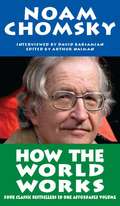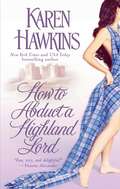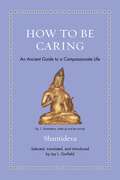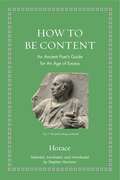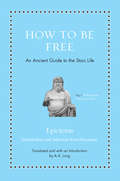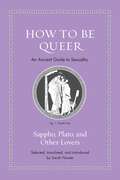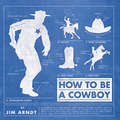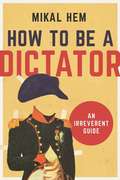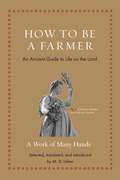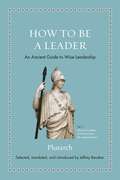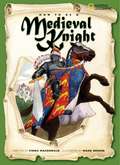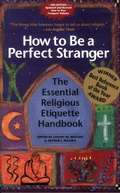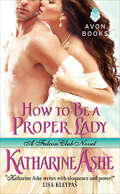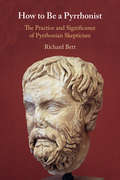- Table View
- List View
How the World Works
by Noam Chomsky David Barsamian Arthur NaimanAccording to The New York Times, Noam Chomsky is arguably the most important intellectual alive. " But he isn't easy to read . . . or at least he wasn't until these books came along. Made up of intensively edited speeches and interviews, they offer something not found anywhere else: pure Chomsky, with every dazzling idea and penetrating insight intact, delivered in clear, accessible, reader-friendly prose. Published as four short books in the famous Real Story series---What Uncle Sam Really Wants; The Prosperous Few and the Restless Many; Secrets, Lies and Democracy; and The Common Good---they've collectively sold almost 600,000 copies. And they continue to sell year after year after year because Chomsky's ideas become, if anything, more relevant as time goes by. For example, twenty years ago he pointed out that "in 1970, about 90% of international capital was used for trade and long-term investment---more or less productive things---and 10% for speculation. By 1990, those figures had reversed. " As we know, speculation continued to increase exponentially. We're paying the price now for not heeding him them.
How to Abduct a Highland Lord (The MacLean Curse Series #1)
by Karen HawkinsIn a delightfully sexy and witty series, New York Times and USA TODAY bestselling author Karen Hawkins creates an unforgettable couple locked in a marriage that begins with a desperate feud—and ends in seduction.It’s hardly the type of wedding Fiona MacLean dreamed of. No family, no guests, just a groom who’s been dragged—literally—to the altar. But if marriage to Black Jack Kincaid, the handsome wastrel she’d sworn never to see again, will avert a bloody war between their clans, so be it. Surely she can share his bed without losing her heart… Known throughout Scotland and London as a wild rogue, Jack is accustomed to waking in dire situations, but…married? Long ago, he and Fiona reveled in a youthful passion. Now, the fiery, sensual lass is his once more. And though their marriage is in name only, Jack is determined to win her forever—body and soul…
How to Achieve True Greatness
by Baldesar CastiglioneThroughout history, some books have changed the world. They have transformed the way we see ourselves - and each other. They have inspired debate, dissent, war and revolution. They have enlightened, outraged, provoked and comforted. They have enriched lives - and destroyed them. Now Penguin brings you the works of the great thinkers, pioneers, radicals and visionaries whose ideas shook civilization and helped make us who we are.
How to Archer: The Ultimate Guide to Espionage and Style and Women and Also Cocktails Ever Written
by Sterling ArcherLying is like 95% of what I do. But believe me: in this book, I’ll let you know exactly how to become a master spy just like me. Obviously, you won’t be as good at it as I am, but that’s because you’re you, and I’m Sterling Archer. I know, I know, it sucks not being me. But don’t beat yourself up about it, because I’m going to show you all the good stuff—what to wear; what to drink; how to seduce women (and, when necessary, men); how to beat up men (and, when necessary, women); how to tell the difference between call girls and hookers (hint: when they’re dead, they’re just hookers) and everything about weapons, secret devices, lying ex-girlfriends, and turtlenecks. In a word? How to Archer.
How to Art: Bringing a Fancy Subject Down to Earth
by Kate BryanA funny, inviting, full-color book about art for people who don&’t know about &“art&”—featuring new artworks by David Shrigley. What is art, where do I find it, and once I&’m in front of it, what am I supposed to think about it? Kate Bryan is a self-confessed art addict who has worked with art for over twenty years. But before she studied art history at university, she&’d visited a gallery just twice in her life and had no idea she was entering an elitist world. Now, she&’s on a mission to help everybody come to art. Like playing or listening to music, or cooking and eating great food, reading or watching films, making art or looking at other people&’s deserves to be an enriching part of all our lives. How to Art provides a nifty way to ingest art on your own terms. From where it is to what it is, to tips on how to actually enjoy famous artworks like the Mona Lisa, to how to own art and make art at home, to vital advice for making a career as an artist and even how to make your dog more cultural, How to Art gives art to everyone—and makes it fun. Laced throughout with original artworks by the very down-to-earth artist David Shrigley.
How to Avoid the Marriage Mart (Breaking the Marriage Rule #3)
by Eva ShepherdA notorious rakeMeets a spirited spinster…At a weekend shooting party, where the guests are as determined to bag a marriage partner as they are a pheasant, two attendees are under siege. The Duke of Kingsford from a clutch of desperate debutantes, and Charlotte FitzRoy from her matchmaking mother! A pretend courtship between them should keep the others at bay, but an unexpected, impassioned kiss may just bring about the marriage they both sought to avoid!From Harlequin Historical: Your romantic escape to the past. Breaking the Marriage RulesBook 1: Beguiling the DukeBook 2: Awakening the DuchessBook 3: Aspirations of a Lady’s MaidBook 4: How to Avoid the Marriage Mart
How to Be Avant-Garde: Modern Artists and the Quest to End Art
by Morgan FalconerOne of Literary Hub's Most Anticipated Books of 2025 The strange story of the twentieth-century artists who sought to destroy art by transforming it into the substance of everyday life. “Art has poisoned our life,” proclaimed Dutch artist and De Stijl cofounder Theo van Doesburg. Reacting to the tumultuous crises of the twentieth century, especially the horrors of World War I, avant-garde artists and writers sought to destroy art by transforming it into the substance of everyday life. Following the evolution of these revolutionary groups, How to Be Avant-Garde charts its pioneers and radical ideas. From Paris to New York, from Zurich to Moscow and Berlin, avant-gardists challenged the confines of the definition of art along with the confines of the canvas itself. Art historian Morgan Falconer starts with the dynamic Futurist founder Filippo Tommaso Marinetti, whose manifesto extolling speed, destruction, and modernity seeded avant-gardes across Europe. In turn, Dadaists Hugo Ball and Emmy Hennings sought to replace art with political cabaret, and the Surrealists tried to exchange it for tools to plumb the unconscious. He guides us through the Russian Constructivists with their adventures in advertising and utopianism and then De Stijl with the geometric abstractions of Piet Mondrian. The Bauhaus broke more boundaries, transmuting art into architecture and design. Finally, the Situationists swapped art for politics, with many of their ideas inspiring the 1968 Paris student protests. How to Be Avant-Garde is a journey through the interlocking networks of these richly creative lives with their visions of a better world, their sometimes sympathetic but often strange and turbulent conversations, and their objects and writings that defied categorization.
How to Be Caring: An Ancient Guide to a Compassionate Life (Ancient Wisdom for Modern Readers)
by ShantidevaA vivid new translation of selections from an inspiring guide to self-transformation through kindness by an eighth-century Buddhist monkWritten by the medieval Indian Buddhist monk Shantideva, The Bodhicaryavatara is one of the most beloved and frequently taught works in Buddhism and a favorite of the Dalai Lama. An inspiring and powerful poem that uses a gripping, first-person, confessional voice, it is the most systematic work of ethical thought in the Indo-Tibetan Buddhist tradition. And its invaluable insights, exhortations, and encouragements about how we can relieve suffering by becoming more caring and compassionate are universal. In How to Be Caring, philosopher and Buddhist scholar Jay Garfield presents a lively new translation of selected verses from Shantideva&’s text that capture its powerful lessons for all of us. The result is the clearest, most concise, and most accessible introduction to this masterful Buddhist guidebook about how we can change the world by changing ourselves.Focusing on the life of a bodhisattva, a person committed to attaining awakening for the benefit of all beings, Shantideva argues that the first step to reducing suffering and making the world better is to conquer our own psychopathologies. Urging us to remember that we won&’t live forever and therefore need to think about what is most important, the work seeks to inspire us and teach us how to be more generous, thoughtful, polite, patient, committed, and self-aware. Featuring an introduction and the original Tibetan text on facing pages, this dazzling volume is filled with wisdom that still speaks directly to readers today.
How to Be Content: An Ancient Poet's Guide for an Age of Excess (Ancient Wisdom for Modern Readers)
by Horace Stephen HarrisonWhat the Roman poet Horace can teach us about how to live a life of contentment What are the secrets to a contented life? One of Rome’s greatest and most influential poets, Horace (65–8 BCE) has been cherished by readers for more than two thousand years not only for his wit, style, and reflections on Roman society, but also for his wisdom about how to live a good life—above all else, a life of contentment in a world of materialistic excess and personal pressures. In How to Be Content, Stephen Harrison, a leading authority on the poet, provides fresh, contemporary translations of poems from across Horace’s works that continue to offer important lessons about the good life, friendship, love, and death.Living during the reign of Rome’s first emperor, Horace drew on Greek and Roman philosophy, especially Stoicism and Epicureanism, to write poems that reflect on how to live a thoughtful and moderate life amid mindless overconsumption, how to achieve and maintain true love and friendship, and how to face disaster and death with patience and courage. From memorable counsel on the pointlessness of worrying about the future to valuable advice about living in the moment, these poems, by the man who famously advised us to carpe diem, or “harvest the day,” continue to provide brilliant meditations on perennial human problems.Featuring translations of, and commentary on, complete poems from Horace’s Odes, Satires, Epistles, and Epodes, accompanied by the original Latin, How to Be Content is both an ideal introduction to Horace and a compelling book of timeless wisdom.
How to Be Danish: A Journey to the Cultural Heart of Denmark
by Patrick KingsleyPart reportage, part travelogue, this is a fascinating introduction to contemporary Danish culture for anyone who wants to know more about the happiest nation in the world.Denmark is the country of the moment. The motherland of Borgen and The Killing, it&’s the runaway champion of Eurovision, and home to Noma, the world&’s most eccentric restaurant.But though we wear their sweaters and read their thrillers, how much do we really know about the Danes themselves? Part reportage, part travelogue, How to be Danish fills in the gaps – an introduction to contemporary Danish culture that spans politics, television, food, architecture and design. Welcome to the happiest country in the world.
How to Be Free: An Ancient Guide to the Stoic Life (Ancient Wisdom for Modern Readers)
by Epictetus Anthony LongA superb new edition of Epictetus’s famed handbook on Stoicism—translated by one of the world’s leading authorities on Stoic philosophyBorn a slave, the Roman Stoic philosopher Epictetus (c. 55–135 AD) taught that mental freedom is supreme, since it can liberate one anywhere, even in a prison. In How to Be Free, A. A. Long—one of the world’s leading authorities on Stoicism and a pioneer in its remarkable contemporary revival—provides a superb new edition of Epictetus’s celebrated guide to the Stoic philosophy of life (the Encheiridion) along with a selection of related reflections in his Discourses.Freedom, for Epictetus, is not a human right or a political prerogative but a psychological and ethical achievement, a gift that we alone can bestow on ourselves. We can all be free, but only if we learn to assign paramount value to what we can control (our motivations and reactions), treat what we cannot control with equanimity, and view our circumstances as opportunities to do well and be well, no matter what happens to us through misfortune or the actions of other people.How to Be Free features splendid new translations and the original Greek on facing pages, a compelling introduction that sets Epictetus in context and describes the importance of Stoic freedom today, and an invaluable glossary of key words and concepts. The result is an unmatched introduction to this powerful method of managing emotions and handling life’s situations, from the most ordinary to the most demanding.
How to Be Healthy: An Ancient Guide to Wellness (Ancient Wisdom for Modern Readers)
by GalenTimeless wisdom about how to be healthy in body and mind from one of the greatest physicians of the ancient worldThe second-century Greek physician Galen—the most famous doctor in antiquity after Hippocrates—is a central figure in Western medicine. A talented doctor, surgeon, writer, philosopher, teacher, pharmacologist, and inventor, Galen attended the court of Marcus Aurelius, living through outbreaks of plague (likely smallpox) that devastated the Roman Empire. He also served as physician for professional gladiators, boasting that only two fighters died during his first year (his predecessor had lost sixteen). In writings that provided the foundation of Western medicine up to the nineteenth century, Galen created a unified account of health and disease. In How to Be Healthy, practicing physician and classical historian Katherine Van Schaik presents a collection of Galen’s enduring insights about how we can take care of our bodies and minds, prevent disease, and reach a healthy old age.Although we now know that many of Galen’s ideas about physiology are wrong, How to Be Healthy shows that much of his advice remains sound. In these selections from his writings, presented in fresh translations, Galen discusses the art of medicine, exercise and diet, the mind-body connection, the difficulty of applying general medical principles to individuals, and much more. Featuring an introduction, brief commentaries that connect ancient medical practices to modern ones, and the original Greek on facing pages, How to Be Healthy offers an entertaining and enlightening new perspective on the age-old pursuit of wellness, from the importance of “the exercise with a small ball” to the benefits of “avoiding distress.”
How to Be Normal
by Phil Christman&“Erudite riffs on race, religion, masculinity and [more]. . . . A crisp set of essays that bring big social and cultural debates to a human level.&” —Kirkus Reviews Phil Christman is one of the best cultural critics working today. Or, as a reviewer of his previous book, Midwest Futures, put it, &“one of the most underappreciated writers of [his] generation.&” You may also know Phil from his columns in Commonweal and Plough, or his viral essay &“What Is It Like To Be A Man?&”, the latter adapted in his new book, How to Be Normal. Christman&’s second book includes essays on &“How To Be White,&” &“How to Be Religious,&” &“How To Be Married,&” and more, in addition to new versions of previously published essays. You&’ll also find brilliant analyses of middlebrow culture, bad movies, Mark Fisher, Christian fundamentalism, and more. With exquisite attention to syntax and prose, the astoundingly well-read Christman pairs a deceptively breezy style with radical openness. In his witty, original hands, seemingly &“normal&” subjects are rendered exceptional, and exceptionally. &“A probing and provocative collection.&” —Publishers Weekly &“Engaging a belles-lettristic negative capability, Christman takes on the big subjects while always remembering that the point of criticism is to more fully be a person, part of &‘our little attempts that we make at building a home in this world.&’&” —Ed Simon, The Millions &“Christman charts a frank and fearless guide for the perplexed, the battered, the exhausted, and the outraged.&” —Chris Lehmann, The New Republic &“Earnest and intense.&” —Richard Babcock, Wall Street Journal
How to Be Queer: An Ancient Guide to Sexuality (Ancient Wisdom for Modern Readers)
by Sarah NooterAn irresistible anthology of ancient Greek writings that explore queer desire and loveEros, limb-loosening, whirls me about again,that bittersweet, implacable creature.—SapphoThe idea of sexual fluidity may seem new, but it is at least as old as the ancient Greeks, who wrote about queer experiences with remarkable frankness, wit, and insight. How to Be Queer is an infatuating collection of these writings about desire, love, and lust between men, between women, and between humans and gods, in lucid and lively new translations. Filled with enthralling stories, this anthology invites readers of all sexualities and identities to explore writings that describe many kinds of erotic encounters and feelings, and that envision a playful and passionate approach to sexuality as part of a rich and fulfilling life.How to Be Queer starts with Homer&’s Iliad and moves through lyric poetry, tragedy, comedy, philosophy, and biography, drawing on a wide range of authors, including Sappho, Plato, Anacreon, Pindar, Theognis, Aristophanes, and Xenophon. It features both beautiful poetry and thought-provoking prose, emotional outpourings and humorous anecdotes. From Homer&’s story of the relationship between Achilles and Patroclus, one of the most intense between men in world literature, to Sappho&’s lyrics on the pleasures and pains of loving women, these writings show the many meanings of what the Greeks called eros.Complete with brief introductions to the selections, and with the original Greek on facing pages, How to Be Queer reveals what the Greeks knew long ago—that the erotic and queer are a source of life and a cause for celebration.
How to Be a Bad Emperor: An Ancient Guide to Truly Terrible Leaders (Ancient Wisdom for Modern Readers)
by SuetoniusWhat would Caligula do? What the worst Roman emperors can teach us about how not to leadIf recent history has taught us anything, it's that sometimes the best guide to leadership is the negative example. But that insight is hardly new. Nearly 2,000 years ago, Suetonius wrote Lives of the Caesars, perhaps the greatest negative leadership book of all time. He was ideally suited to write about terrible political leaders; after all, he was also the author of Famous Prostitutes and Words of Insult, both sadly lost. In How to Be a Bad Emperor, Josiah Osgood provides crisp new translations of Suetonius's briskly paced, darkly comic biographies of the Roman emperors Julius Caesar, Tiberius, Caligula, and Nero. Entertaining and shocking, the stories of these ancient anti-role models show how power inflames leaders' worst tendencies, causing almost incalculable damage.Complete with an introduction and the original Latin on facing pages, How to Be a Bad Emperor is both a gleeful romp through some of the nastiest bits of Roman history and a perceptive account of leadership gone monstrously awry. We meet Caesar, using his aunt's funeral to brag about his descent from gods and kings—and hiding his bald head with a comb-over and a laurel crown; Tiberius, neglecting public affairs in favor of wine, perverse sex, tortures, and executions; the insomniac sadist Caligula, flaunting his skill at cruel put-downs; and the matricide Nero, indulging his mania for public performance.In a world bristling with strongmen eager to cast themselves as the Caesars of our day, How to Be a Bad Emperor is a delightfully enlightening guide to the dangers of power without character.
How to Be a Cowboy
by Jim ArndtExplore every facet of being a cowboy with essays and colorful photos in this guide from the author of Buckaroo Boots and Art of the Buckle.How to be a Cowboy is a compendium of knowledge and insight, wit and wisdom, and all-around resource for every aspect of cowboy life. It includes the least you need to know about ranching, rodeoing, cooking, music, dancing, yodeling, lingo (like &“dude,&” &“bronc,&” and &“hoss&”), cowboy poetry, hats, boots (like boot history and how to choose a pair for yourself), spurs, shirts, horses, hats, buckles, denim, and also how to walk like a cowboy. Discover the top twenty cowboy movies and top western novels. You&’ll even find advice from cowboy icon Will Rogers.&“It&’s the rich color camerawork that really compels, and Arndt&’s classy shots of elaborately designed boots, shirts, blue jeans and hats, plus peripheral cowboy gear, are enough to make a guy chuck the 9-to-5 and head out to the wild, wild West.&”—Martin Brady, BookPage
How to Be a Dictator: An Irreverent Guide
by Mikal HemA Tongue-in-Cheek Guide to Becoming a Dictator, Based on the Outrageous, Scandalous, and Excessive Behavior of Dictators Past and Present Who hasn’t dreamed of one day ruling your own country? Along with great power comes unlimited influence, control, admiration, and often wealth. How to Be a Dictator will teach you the tricks of the trade-how to rise to the top and stay in power, and how to enjoy the fruits of your excellence.Featuring examples from the most successful leaders and regimes in the business, including Kim Jong Il, Robert Mugabe, Muammar Gaddafi, Nicolae Ceausescu, François "Papa Doc” Duvalier, and many others, this handy guide offers ten easy lessons on becoming and acting like a dictator from how to rig an election and create your own personality cult to the dos and don’ts of dictator fashion. Other topics include: how to become wealthy and spend your fortune, sleeping around, expressing your literary genius, and how to avoid being toppled, exiled, and or meeting any other dismal end. Combining black humor with political insights, How to Be a Dictator is peppered with horrifying and hilarious stories from some of the most eccentric modern world leaders.
How to Be a Farmer: An Ancient Guide to Life on the Land (Ancient Wisdom for Modern Readers)
by M. D. Usher Mark UsherA delightful anthology of classical Greek and Roman writings celebrating country living—ranging from a philosophy of compost to hymns to the gods of agricultureWhether you farm or garden, live in the country or long to move there, or simply enjoy an occasional rural retreat, you will be delighted by this cornucopia of writings about living and working on the land, harvested from the fertile fields of ancient Greek and Roman literature. An inspiring antidote to the digital age, How to Be a Farmer evokes the beauty and bounty of nature with a rich mixture of philosophy, practical advice, history, and humor. Together, these timeless reflections on what the Greeks called boukolika and the Romans res rusticae provide an entertaining and enlightening guide to a more meaningful and sustainable way of life.In fresh translations by classicist and farmer M. D. Usher, with the original texts on facing pages, Hesiod praises the dignity of labor; Plato describes the rustic simplicity of his ideal republic; Varro dedicates a farming manual to his wife, Fundania (“Mrs. Farmer”); and Vergil idealizes farmers as residents of the Golden Age. In other selections, Horace extols the joys of simple living at his cherished country farm; Pliny the Elder explains why all culture stems from agriculture; Columella praises donkeys and tells how to choose a ram or a dog; Musonius Rufus argues that farming is the best livelihood for a philosopher; and there is much more.Proof that farming is ultimately a state of mind we should all cultivate, How to Be a Farmer will charm anyone who loves nature or its fruits.
How to Be a Friend: An Ancient Guide to True Friendship (Ancient Wisdom for Modern Readers)
by Marcus Tullius Cicero Philip FreemanA splendid new translation of one of the greatest books on friendship ever writtenIn a world where social media, online relationships, and relentless self-absorption threaten the very idea of deep and lasting friendships, the search for true friends is more important than ever. In this short book, which is one of the greatest ever written on the subject, the famous Roman politician and philosopher Cicero offers a compelling guide to finding, keeping, and appreciating friends. With wit and wisdom, Cicero shows us not only how to build friendships but also why they must be a key part of our lives. For, as Cicero says, life without friends is not worth living.Filled with timeless advice and insights, Cicero’s heartfelt and moving classic—written in 44 BC and originally titled De Amicitia—has inspired readers for more than two thousand years, from St. Augustine and Dante to Thomas Jefferson and John Adams. Presented here in a lively new translation with the original Latin on facing pages and an inviting introduction, How to Be a Friend explores how to choose the right friends, how to avoid the pitfalls of friendship, and how to live with friends in good times and bad. Cicero also praises what he sees as the deepest kind of friendship—one in which two people find in each other “another self” or a kindred soul.An honest and eloquent guide to finding and treasuring true friends, How to Be a Friend speaks as powerfully today as when it was first written.
How to Be a Leader: An Ancient Guide to Wise Leadership (Ancient Wisdom for Modern Readers)
by PlutarchTimeless advice on how to be a successful leader in any fieldThe ancient biographer and essayist Plutarch thought deeply about the leadership qualities of the eminent Greeks and Romans he profiled in his famous—and massive—Lives, including politicians and generals such as Pericles, Alexander the Great, Julius Caesar, and Mark Antony. Luckily for us, Plutarch distilled what he learned about wise leadership in a handful of essays, which are filled with essential lessons for experienced and aspiring leaders in any field today. In How to Be a Leader, Jeffrey Beneker presents the most important of these essays in lively new translations accompanied by an enlightening introduction, informative notes, and the original Greek on facing pages.In "To an Uneducated Leader," "How to Be a Good Leader," and "Should an Old Man Engage in Politics?" Plutarch explains the characteristics of successful leaders, from being guided by reason and exercising self-control to being free from envy and the love of power, illustrating his points with memorable examples drawn from legendary Greco-Roman lives. He also explains how to train for leadership, persuade and deal with colleagues, manage one's career, and much more.Writing at the height of the Roman Empire, Plutarch suggested that people should pursue positions of leadership only if they are motivated by "judgment and reason"—not "rashly inspired by the vain pursuit of glory, a sense of rivalry, or a lack of other meaningful activities." His wise counsel remains as relevant as ever.
How to Be a Medieval Knight
by Fiona Macdonald Mark BerginAre your estates in order? Can you recite poetry, or sing, or play a lute? Have you had your hair cut, squire? Are you sitting comfortably in all that armor? Will you perform your duties with honor and chivalry? Are you really worthy of pursuing your destiny as a knight of olde, among the elite of medieval society in status and wealth? You know you are! So arise, Sir Reader, and go forth and nobly answer your calling.
How to Be a Perfect Stranger: The Essential Religious Etiquette Handbook (4th edition)
by Arthur J. Magida Stuart M. MatlinsA straightforward guide to the rituals and celebrations of the major religions and denominations in the United States and Canada from the perspective of an interested guest of any other faith, this easy-to-use book is based on information obtained from authorities of each religion.
How to Be a Proper Lady: A Falcon Club Novel (The Falcon Club Novels #2)
by Katharine AsheA fiery female privateer meets her match on the high seas in this Regency romance by a USA Today–bestselling author.The Rules of Being a Proper Lady1) Never take steps greater than six inches apart.2) Never look boldly at a gentleman.3) And never, ever, kiss a man who is not your fiancé.But beautiful, bold Viola Carlyle doesn't care about the rules. And she desperately wants to kiss the notoriously tempting Captain Jin Seton, the man who brought her kicking and fighting back to English society. Kidnapped as a child, now she longs to return to that life of freedom where she was able to live—and love—as she wished.Having hunted Viola for two years, Jin Seton has finally found his good luck—for, by finding Viola, his oldest, deepest debt will at last be paid. And although he has vowed not to let her win his heart, this very improper lady might finally be the one who tames him.Praise for How to Be a Proper Lady“In a word engrossing. I turned page after page and delighted in every word read... Jinan and Viola are some of the first characters in a long time that really touched my heart, and they are what make How to Be a Proper Lady an unforgettable read.” —Romance Junkies“How to Be a Proper Lady has everything fans of historical romance could want in a book.” —Joyfully Reviewed“Every bit as delicious as it promised.” —The Librarian Next Door
How to Be a Pyrrhonist: The Practice and Significance of Pyrrhonian Skepticism
by Richard BettWhat was it like to be a practitioner of Pyrrhonist skepticism? This important volume brings together for the first time a selection of Richard Bett's essays on ancient Pyrrhonism, allowing readers a better understanding of the key aspects of this school of thought. The volume examines Pyrrhonism's manner of self-presentation, including its methods of writing, its desire to show how special it is, and its use of humor; it considers Pyrrhonism's argumentative procedures regarding specific topics, such as signs, space, or the Modes; and it explores what it meant in practice to live as a Pyrrhonist, including the kind of ethical outlook which Pyrrhonism might allow and, in general, the character of a skeptical life - and how far these might strike us as feasible or desirable. It also shows how Pyrrhonism often raises questions that matter to us today, both in our everyday lives and in our philosophical reflection.
How to Be a Renaissance Woman: The Untold History of Beauty & Female Creativity
by Jill BurkeAn alternative history of the Renaissance—as seen through the emerging literature of beauty tips—focusing on the actresses, authors, and courtesans who rebelled against the misogyny of their era.Beauty, make-up, art, power: How to Be a Renaissance Woman presents an alternative history of this fascinating period as told by the women behind the paintings, providing a window into their often overlooked or silenced lives. Can the pressures women feel to look good be traced back to the sixteenth century? As the Renaissance visual world became populated by female nudes from the likes of Michelangelo and Titian, a vibrant literary scene of beauty tips emerged, fueling debates about cosmetics and adornment. Telling the stories of courtesans, artists, actresses, and writers rebelling against the strictures of their time, when burgeoning colonialism gave rise to increasingly sinister evaluations of bodies and skin color, this book puts beauty culture into the frame. How to Be a Renaissance Woman will take readers from bustling Italian market squares, the places where the poorest women and immigrant communities influenced cosmetic products and practices, to the highest echelons of Renaissance society, where beauty could be a powerful weapon in securing strategic marriages and family alliances. It will investigate how skin-whitening practices shifted in step with the emerging sub-Saharan African slave trade, how fads for fattening and thinning diets came and went, and how hairstyles and fashion could be a tool for dissent and rebellion—then as now. This surprising and illuminating narrative will make you question your ideas about your own body, and ask: Why are women often so critical of their appearance? What do we stand to lose, but also to gain, from beauty culture? What is the relationship between looks and power?
